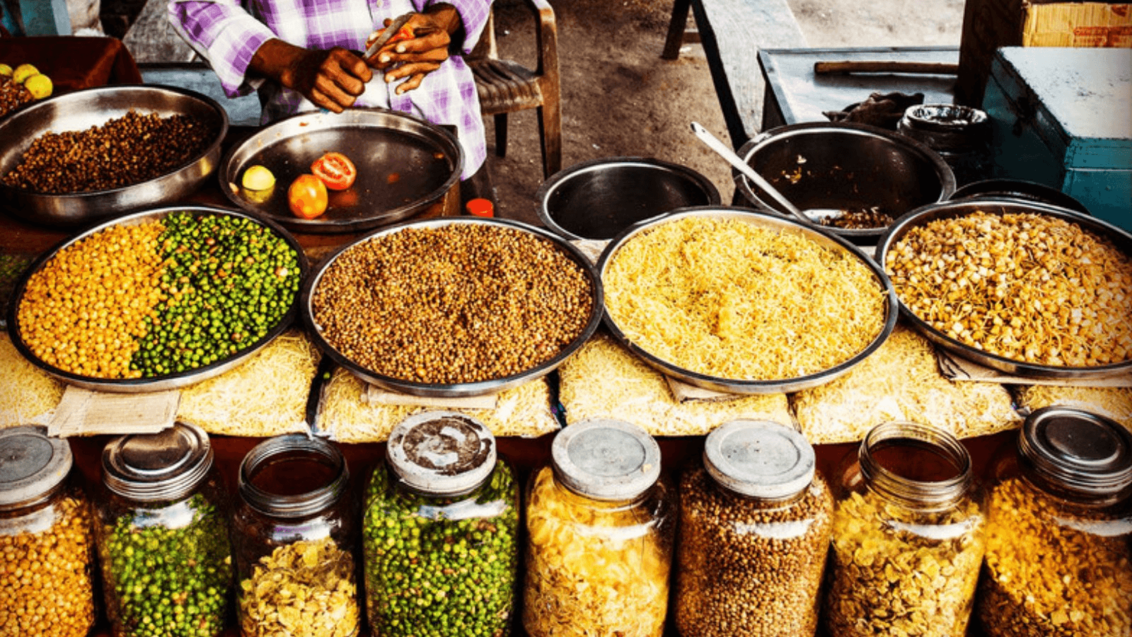Diversification, an escalator and the end of rainfall myths

Good cereal yields are possible even in dry conditions. But there is much more to the equation than just grain and rain. A Syngenta Foundation webinar showcased farmers’ success in Kenya. Taking a multi-pronged approach is key.
The webinar focused on a farming system in the semi-arid area north of Mount Kenya. The region is one of the world’s most biodiverse. However, it faces numerous challenges such as increasing population pressure, erratic water availability, and conflicting demands on natural resources. Climate change is accentuating many of the problems.
Local farming company Agventure tackled a number of the challenges head-on. Managing Director Don White and his team developed and implemented climate-smart resilient agriculture and ensured the sustainability and profitability of their operations. These efforts focus on soil health.
Working to raise stubbornly low cereal yields on semi-arid land, Don emphasizes, the temptation is naturally to concentrate on water. Don makes very clear, however, that “rainfall was not the limiting factor”. To him, the major problem was continuous monocropping. The consequences were deteriorating soil health and increasing pest and disease pressure.
A major problem was that Agventure’s cereal crops were not able to root well. Soil diseases were one major reason. In addition, frequent machinery use had compacted the soil, creating a “plough pan” close to the surface. As Don explains, this layer prevents root penetration and thus limits crops’ access to moisture and nutrients.
Inspiration from Down Under
In the search for solutions, Agventure turned to Australia. Many farmers there face similar hurdles to colleagues in semi-arid areas of Kenya. These challenges include difficult soils, very low rainfall – and no subsidies! However, Australian farmers have succeeded in harvesting good crops and earning respectable incomes. “That proof was the foundation of what we did in Africa”, Don declares.
Back in Kenya, Don knew that the key to creating a more resilient farming system would be crop rotations. As a key alternative to rotate with cereals, he chose green peas. “Although they are not the perfect crop, they grow well in our setting and have a readily available market”, comments Don. “Pulse crops such as peas can have a ‘conditioning’ effect on soil, improving its structure. They are also not susceptible to the same soil diseases as cereals.”
Peas alone, however, are not enough. Don initially worked on a four-crop rotation. He is always on the lookout for additional options. The selected crops need to meet several criteria. They must be suited to the local environment and Agventure’s capacity. They also need to be scalable in production and find customers.
What Don calls “joining the escalator to success” is when farms start rotating crops and engaging in related soil improvement practices. However, not all crops are suitable for a particular region’s growing conditions or market. Careful analysis is essential. Soja, for example, was not an option for Agventure. High-altitude varieties are lacking and the nearby market is low-value.
Another key challenge for Don and colleagues was that the services required for several possible crops are not available in their region. “When we talk about scaling up, it’s not enough just to have a good agronomic idea”, Don knows. “One must also take local infrastructure and expertise into account.”
Explaining the sense, and not just the methods
Between 2012 and 2016 Agventure began partnering with various organizations to teach local farmers modern agricultural techniques. The results were disappointing. Don and the team realized that “teaching farmers how to grow different crops isn’t enough: you also need to explain why”. Doing so in person is time-consuming, but more effective than ‘remote’ methods. Agventure reached out to about 3500 farmers. It was not until 2018 that the company started to achieve what Don calls “good results and critical mass”.
In 2019, Agventure began working with the Syngenta Foundation on market-led diversification. Since then, they have built a canola processing plant, developed market linkages that improve supplier relationships, and created trading and value chain opportunities. At eight trial sites, Agventure also runs hundreds of studies of varieties, crop nutrients, and other inputs.
“We are very grateful to the Syngenta Foundation”, says Don. “Employees have helped us with our Center of Excellence, as well as in testing, promoting and introducing rotation crops, and above all in engaging smallholders in market-oriented production.”
At the webinar, Don White presented the impressive results achieved on the Ol Donyo farm. Average annual rainfall there varies between 400-600 mm. Comparison of the years 2009, 2011, and 2014 shows a marked increase in production. In 2009, the overall harvest was close to zero when the wheat monoculture failed. In 2011, staff introduced peas in the rotation, with barley joining in 2014. This diversification dramatically increased wheat yield – despite a hard season with low rainfall. It rose from 0 in 2009 to about 3.4 tons/ha five years later. By 2019, the overall average yield had gone up to 5.2 tons/ha, even though rainfall remained roughly the same.
Don points to success factors such as reducing crop losses, giving farmers income alternatives via diversification, reducing crop risks, and increasing resilience. Importantly, he says, “Agventure has also created an entire ‘ecosystem’ to match”. This includes training, processing, and marketing services, as well as a registered seed company. Soil health, however, has remained firmly in the company’s focus all the way.
“Our objectives were to increase the resilience of rainfed farming systems, engage with local communities and add local value”, Don concluded his talk. “We wanted our activities to benefit farmers and local consumers. And they do.”
